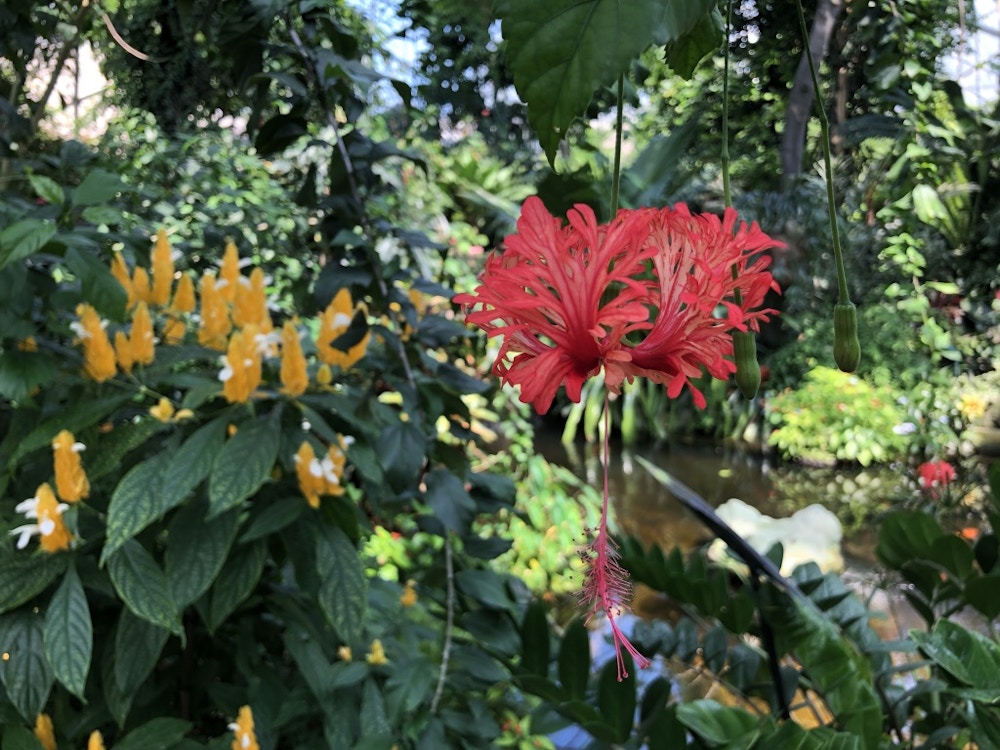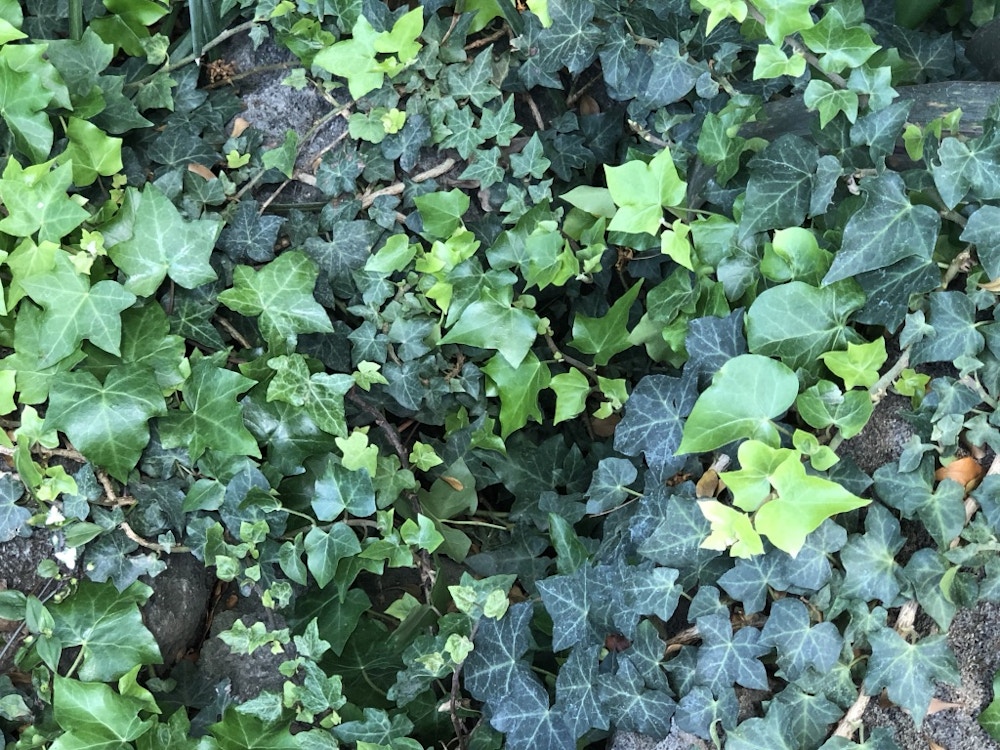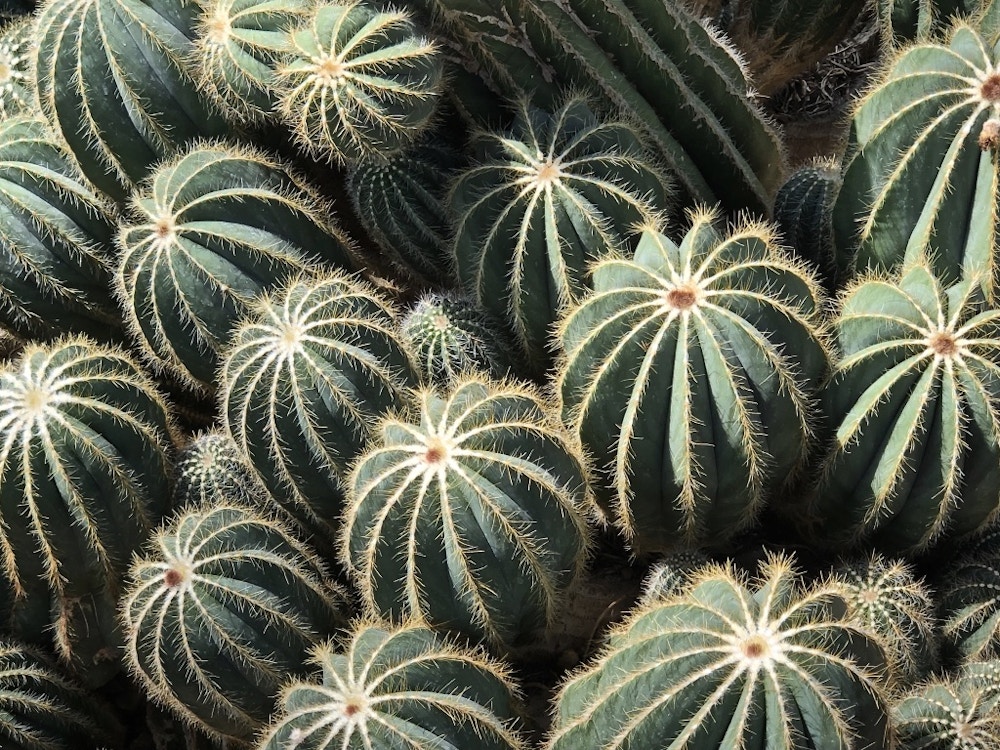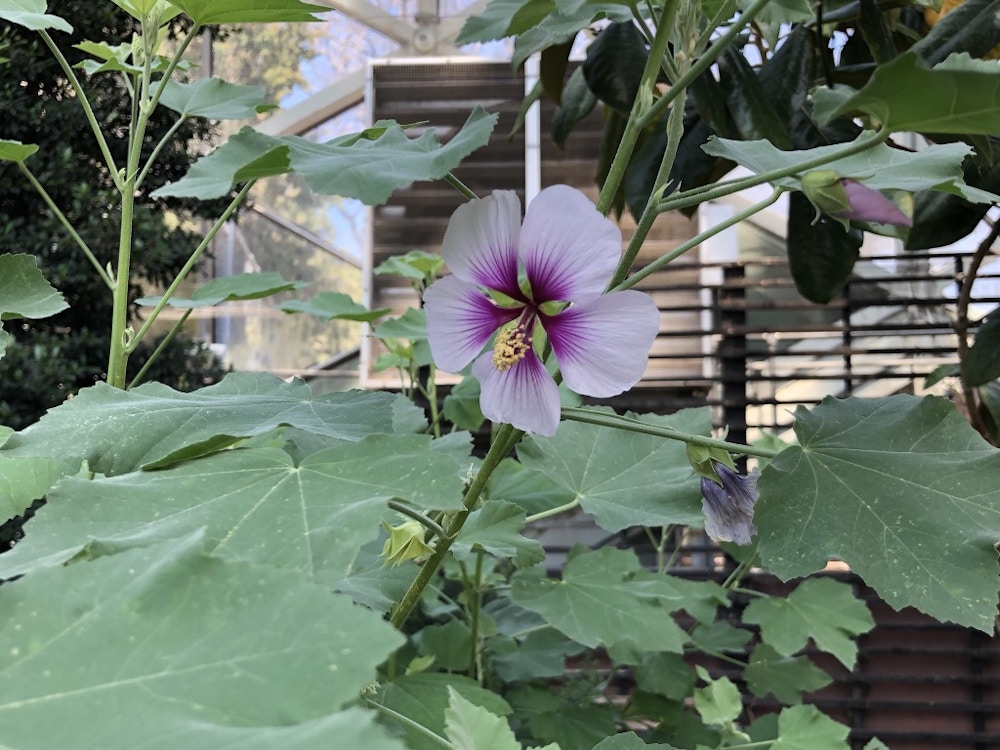May. 25, 2022
•12 min read
The summer I returned to the Midwest, my parents took me with them to the sprawling garden center in the country by their home to pick out the flowers they felt were missing from their already ornate planting beds. In a stage of transition, recently graduated and unsure of what the future would hold, I was drawn to the rows of pink and purple flowers in the balmy greenhouses, plastic flaps waving in the wind. Plants have always made sense to me and on that breezy late June day where the clouds lazily drifted like cotton balls across the sky, making me feel like I had all the time in the world, I felt at peace. Down one of the rows, my eyes stopped on a few lime green plants with thick pointed leaves lined with pink. I know them now to be varieties of echeveria, a common succulent found in garden stores and restaurants, but at the time I was in awe. I found a desert rose (adenium obesum) nearby, which I was drawn to for its whimsical appearance and promise of bright fuchsia flowers. I took these plants home with me, ready to care for them.
My parents helped me find a sun drenched spot on the patio where I could keep my new plants and I eagerly checked on them every day, watching them grow and some of them even flower. Though the desert rose didn’t flower, and still hasn’t to this day, it’s still with me over three years later. While I covet this plant on my window sill and enjoy watching it’s steady growth, with new spindly branches reaching to the sky every few months, it will not produce bright flowers. Perhaps that’s the crux of the matter; I keep this plant, native to Africa in a kitchen in Wisconsin. Maybe it can’t bloom in this environment where we had endless days of overcast weather this winter, even if I’ve cared for it appropriately.
Plants are sensitive to changes and threats to their survival, not unlike humans. They require the proper conditions to grow and thrive and are subject to wither when their environment experiences undesirable changes. Upheaval is hard to deal with for all living things. I see myself in the plants around me and I’ve spent the last six months delving deeper into my relationship with them, seeking solace in their quiet companionship and the lessons they teach me.
When I read about the Zen Garden Show at the Mitchell Park Horticultural Conservatory, I immediately wanted to go. This winter has been tough. It’s been the most difficult one since I came back to Wisconsin four winters ago. There was endless snow covering the entire landscape. There was a stretch of days with wind chills of upwards of -50. There were five, sometimes more days in a row with no sunshine. Winter in Wisconsin always feels like death to me, spring a rebirth. I always thought houseplants were a brilliant idea to get me through such a bleak, barren inevitability. They were a way for me to say I could still have life in the darkness of winter.
Spring is technically here, but spring in Wisconsin tends to start slow and then build to a quick crescendo before exploding into the humid days of summer. We aren’t to the crescendo yet and as I watch the buds slowly emerge from the tree branches and the daffodils limp into existence, I knew I needed to be with plants. Their aliveness helps me to feel alive, invigorated.
I walked into The Domes, a place I’m sure I went to when I was a child, but definitely don’t remember and immediately felt nostalgic. The entryway is reminiscent of a school auditorium with blandly colored tiles and the distinct smell of humidity. It reminded me exactly of the experience of going to swimming lessons at the local middle school when I was a child, drops of moisture on all the walls and in the air I breathed. I paid my dues and walked past the entry into the building. I saw the Zen garden to the left, but ultimately chose the jungle; much like how I eat a meal, I wanted to save the special exhibit for last.
One of the first things I noticed in the jungle dome was the presence of Nerve Plant, or, fittonia, carpeting the open spaces on the ground. If you aren’t familiar, nerve plant has small oblong leaves, which are most commonly seen with either silver or red veins running throughout. I have both varieties in my home. The veins on the leaves are quite visually striking and this is probably why my eyes went right to them.
Tears welled up in my eyes because I had come here to see the Zen garden, but I hadn’t even considered that I would see a lot of the plants I grow at home in a more natural environment, surrounded by other plants requiring similar sunlight and humidity conditions. I experienced a sort of a-ha moment at this point where all the hard work I had done compiling an Excel spreadsheet of growing conditions for my plants was solidified as I was able to literally see all of it in one place in front of my eyes. Growing houseplants can be daunting once you reach a certain threshold of quantity; it’s hard to keep track of all of their needs and make sure they are in the right room and by the right window for them.
I noticed rubber plants (ficus elastica) scattered on the ground, another one of my favorites. I have a rubber plant in a large ceramic pot, grey like the sea, that has four stalks and is a couple feet tall. I started it from one main stalk only a few inches tall about three and a half years ago. It’s one of the fastest growing plants I have and I have continued to propagate offshoots from the pot; I now have an additional five baby rubber plants with another couple that I’ve since given away for presents. One of my favorite feelings is sharing the gift of growth with somebody else, especially a rubber plant. It’s an exceptional plant with large glossy deep green leaves.
Much to my delight, there was real ginger coming up from the ground. I could see the knobby roots peeking through below some foliage, like a pile of beige caterpillars. I was in heaven and I could feel my excitement building with every consecutive plant I found that I have a relationship with. Living in Wisconsin, I’ve never seen a cacao tree in person. They have one there with bulbous green and orangeish pods hanging from the trunk. Seeing that connection between the cacao I consume in my smoothies, oatmeal, and beverages and the tree from which it came provides me with a sense of connection that translates into the world making sense, which is an exceptional feeling in a world that often doesn’t make much sense.
I found my way along the meandering pathways, children running by me, to the tiger stripe calathea, also known as prayer plant. The leaves of this plant are matte with purplish markings on them and they remain expansive during the day. As night falls, the leaves fold up together, looking similar to hands in prayer. I’m not particularly religious, but I do consider myself deeply spiritual and when I purchased a prayer plant last fall, it gave me the gift of instant peace. I was going through a difficult life change and needed comfort. I look at it and I feel reassured, as I did when I looked at it in The Domes. Sometimes the stories plants tell us can be as much a source of guidance as the best Aesop’s fable out there. I found myself reaching to prayer this past fall, something I’ve never habitually done and my prayer plant was a tangible embodiment of my need to look beyond myself. It was a reminder to take that time to connect to a higher power.
I’ve struggled with pretty significant anxiety the last few years, to the point of job loss and loss of functioning. It’s been hard to be out of the house at times and I experience anxiety in public places where I may feel trapped, also known as agoraphobia. This was the first time in I felt comfortable out in public in a long time. I felt reassured being surrounded by plants, a part of the world I’ve never felt rejected or betrayed by.
Inside the jungle dome, I was delighted by soursop, ceylon cinnamon, yerba mate, multiple bromeliads, orchids, banana, and coffee trees. There was even a large tree I had to strain my neck to see the top of called sausage fruit tree, which has fruit that resembles a pasty brown two foot long sausage. I’ve never seen something like it. Another one of my favorite new discoveries was a class of plants call cycads, which are prehistoric and considered one of the oldest plants in the world. They have sawtooth like fronds coming out from a central portion and have what looks like a cross between a gigantic pine cone and a pineapple on their bases. Plants expand what we know of the world, what we think is possible. It’s just not the sort of plant you can see amongst the oak and maple trees of Wisconsin landscapes.
One of the last plants I noticed was a begonia. I love begonias and find them just as easy to grow as the rubber plant. I have a variety called the strawberry begonia and it works great for hanging baskets as it sends vine like projections forth from its roots that dangle in the air and start producing miniature versions of the main plant. I started with one and have produced an additional five to ten plants off of the original in just over a years time. I highly recommend these small plants with dynamic purple, red, and green hairy leaves.
Though I could have just posted up in the jungle with a sleeping bag and never left, I decided to go to the desert dome next.
The desert dome felt like being on the moon to me. Growing up in the Midwest and spending a brief stint in North Carolina, I’m used to foliage. I’m used to humidity. A desert landscape is incredibly foreign to me and I appreciate the contrast. I don’t grow as many desert loving plants besides the handful of cacti and succulents I have and my experience in the desert dome was entirely different than the jungle. The desert dome was a study in texture and in resilience rather than abundance.
Desert plants are amazing at protecting themselves. You can wander through the desert dome and see spines of all sizes coming out of most of the plants. Some of these plants produce flowers that smell like rotting flesh. The group of them are called stapeliads. Desert plants don’t look particularly juicy and beautiful, but their survival mechanisms are a reflection of their worth. They evolved to be physically intimidating to protect themselves.
Being in this environment, I embraced what it meant to experience wonder and childlike enthusiasm. I stopped to take pictures of many of the plants as I wandered through the landscape. I stopped to find the lithops, or living stone plants, nestled into a mound of sand. It was a scavenger hunt where the prize was finding a plant that’s learned how to play hide and seek.
I saw jade plants that came up to at least my waist. I have a jade plant that is about a foot tall and I’ve always wanted to nurture it to the size of some of the jade varieties in this dome. There’s something beautiful about how full their branches become with the thick, pink-tinged green leaves. Jade is always a study in patience for me because it doesn’t grow as quickly and robustly as my rubber plant or strawberry begonia. It cannot be rushed and I’m forced to appreciate it for where it’s at and then realize in amazement how far its come years later. I do this with my own growth, too. It’s hard to see growth in the midst of all the effort and much easier to see when everything becomes acutely profound. Jade has always taught me to embrace today and enjoy those moments when I can see the progress from a distance.
Near the end of my loop, I stopped for a good few minutes to stare at a strange plant. It was a Namibian grape. With a light greyish brown trunk with worm-like projections jutting off the top of it, it’s no birch tree. The trunk is misshapen with flakes of bark peeling off revealing dull green flesh beneath. I’ve never seen anything like it and I had to take it in for a while. Even when you think you know the world, it can take you by surprise. This African desert plant was a reminder to me that no matter how much I learn, there is always more out there. The world is unexpected and there are constantly opportunities to appreciate how magical it really is. I think I lose sight of that sometimes, especially when attempting to come out of the solitude and stagnation of Wisconsin winters.
The special exhibit was a distinctly Wisconsin representation of a Zen garden. One of the most pleasant parts of this dome was walking through the doorway and being hit with a wall of sweet floral aroma from the many flowers carpeting the ground. There were varieties in pink, white, and purple to create a cohesive visual. It was pleasant to look at. There were rock gardens interspersed between the flowers and a koi pond, per tradition. Throughout the pathways, there were examples of Japanese Zen garden features including, ikebana, the art of flower arranging, a bonsai tree, and a structure with kokedama, which are balls of moss-covered soil upon which an ornamental plant grows.
It didn’t feel cohesive to me. When I was in Portland, Oregon on a road trip that same summer I started to become interested in growing plants of my own, I visited the Japanese garden up in the hills overlooking the city. If you ever go to Portland, I highly recommend visiting this and the rose garden as they are stunning. The climate of Portland certainly lends itself to the Japanese garden there, but walking through it, you could pick up on how each piece was meticulously chosen and placed. There were people tending to the garden while we were there and you could tell that everything had a purpose and was meant to flow with everything around it. It felt like walking through a living story where nothing was arbitrary. There was also a distinct minimalist quality to it; the importance of each piece was more important than the quantity of plants in the garden. The plethora of petunias and hydrangeas at The Domes was a departure from my previous experiences with Zen gardens.
However, looking around me at people sitting on benches, taking in the exhibit, I think the spirit of a Zen garden was there. Clearly, people were slowing down and taking in the landscaping much more than in the other two domes. I couldn’t get enough of the smell and I couldn’t even figure exactly which flowers it was coming from. Without concern I plunged my face into a few flowers, losing myself in the exploration.
Zen gardens are meant to be meditative. Though this one didn’t present as entirely traditional to me, I was able to appreciate the perfumed quality of being inside it while I explored. I appreciated the details. I was able to slow down and be mindful of the flowers, the stones, the trickle of water in the koi pond. I was able to meditate on what was in front of me. The fact that this exhibit will be gone to make room for another one in a few short weeks is ironically representative of the philosophy that all things go through birth and death and that we live in an undeniably temporary world. I’m grateful I was able to experience it while I had the chance.
I explored all three of the domes twice. I didn’t want to leave. I plan to go back soon. Every time I’ve asked somebody here if they’ve been to The Domes, I get the same response: “I think I went when I was a kid, but I don’t remember it.” Some of my favorite memories of recent years are of exploring botanical gardens and natural areas in places I find myself. I know those of us who live in Milwaukee probably have a tendency to take some of the offerings here for granted, but if you get the chance to, go to The Domes. Go to all three of the domes. Take it all in as much as you can. Find the parts that give you joy and give you meaning. Visiting The Domes punctuated my transition from winter to spring and got me through those couple inches of snow we got in April, a time when I am desperate to be around the green and growing. It reminded me of the lessons I’ve learned from plants. It reminded me that there are always more lessons to learn from our natural world.
More Articles by Caitlin Knudsen
Nov. 17, 2022
•7 min read
Jun. 21, 2022
•9 min read
Apr. 8, 2022
•9 min read
About the author
Propagator of succulents, hobbyist baker, healthcare by day, pug wrangler always.








